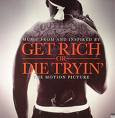Now, let’s talk about a specific instrument that is not created or initiated by the listed company, but rather by an investment bank. Called a call warrant (or “option” outside Malaysia), this tool gives investors the right to own stocks in a company at a fraction of the share’s cost for a fixed period of time.
A call warrant is a derivative-based product that has a fixed tenure (maturity) and, if not exercised, is worthless after its expiry date. Therefore, it is essential to select a call warrant that has sufficient time before it expires to match investment targets.
While a call warrant is traded like a stock, it is not based on the company’s performance but the attractiveness of the company’s stock that is being traded on the stock market. It derives its value from the value of an underlying security stock.
A holder of a call warrant does not have any voting, shareholding or dividend rights. The investor therefore has no say in the management of the company, even though he is affected by any decisions made by the company that impacts the share price of the warrants.
As call warrants are somewhat volatile investment vehicle, it pays to understand some of the terms used.
“Mother share”: The share on which the call warrant is based. It is also known as the underlying security.
·Expiry date or ex-date: This is a very important date to know, because if you do not redeem your call warrant before or on the expiry date, it ceases to exist.
·Exercise or strike price: It’s the stated price per share for which the mother share may be purchased or sold by the call warrant holder upon exercise of the call warrant contract.
Settlement types: This means the type of settlement to warrant holders upon maturity i.e. physical-settled or cash-settled.
Settlement price: This means a reference price determined by the market in which a Call Warrant is converted into cash value.
The call warrant is classified by its exercise style:
·American warrant: This call warrant can be exercised anytime before or on the stated expiry date
·European warrant: Exercise of this call warrant can be carried out only on the day of expiration.
Before investing in call warrants, there are three things you should know and watch out for:
1. Volatility of the mother share because a highly dynamic stock can make the call warrant even more volatile due to the leverage.
2. Determine the leverage based on the formula given below. This determines how much you get paid at the end and the amount you gain or lose when the price goes up or down.
3. Determine the settlement amount based on the formula given below. This determines how much you get paid upon expiry or exercise of a cash-settled call warrant
Cash Settlement formula:
(Settlement Price - Exercise price) / Entitlement Ratio} x Number of CW exercised - Exercise Expenses
4. Expiry Date: The date the call warrant closes and ceases to exist. This means that when the expiry date is due, the value of the call warrant follows the payout formula described in cash settlement formula. However, if the settlement price is less than the exercise price, the cash settlement amount is zero.
Let’s say company XYZ shares are currently priced at RM10 per share. To purchase 1,000 shares which is equivalent to 10 lots, an investor would need RM10,000. However, if the investor opted to buy a call warrant (representing one share) that was going for 50 sen per call warrant, the investor could enjoy the right to own 20,000 shares with the same RM10,000, and be highly rewarded if there is a rise in price!
Because the prices of call warrants are low, the leverage they offer is high so there is a potential for large capital gains, but also losses. While it is common for a share price and a call warrant price to move in parallel, the percentage gain (or loss) will be varied because of the formula used to determine the final payout.
To illustrate this, let’s say that share XYZ gains RM1 per share from RM10 to close at RM11. The percentage gain would be 9%.
However, with a RM1 gain in the call warrant, from 50 sen to RM1.50, the percentage gain would be 66%.
As mentioned above, the leverage call warrants offer can be high. But when the gains are big, the losses can be big too!
If the price drops by RM1, the percentage loss for the share price would be 10%, while the loss on the call warrant could drive the value close to zero. The large drop could bring the settlement price lower than the exercise price, resulting in a zero payout.
Yes, call warrants can offer a smart addition to an investor’s portfolio, but due to their risky nature, call investors need to be attentive to market movements and informed before making their investment decisions.
Happy investing!
-





No comments:
Post a Comment